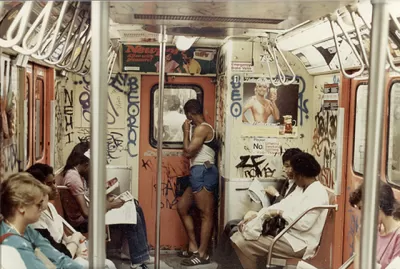New research reveals the regional and national trends of transit ridership—where transit is still a viable option and where travelers have increasingly relied on automobiles.

Yonah Freemark summarizes the findings of new research about historic trends in transit ridership:
Freemark created a database of commuting patterns in the U.S. metropolitan areas between 1970 and 2019 to complete the research. As noted by Freemark, the trends are driven by residential and economic growth outside of the largest U.S. cities:
According to Freemark, "Major regions in the South and Midwest have seen declining transit shares of the nation’s transit commuters." Cities like San Francisco, Seattle, Los Angeles, Boston, and Washington, D.C. actually have more commuter traveling by transit now than they did in the 1970s.
Freemark also ties the transit ridership data to economic growth (i.e., venture capital investment) and also mines the trend data for lessons about how to get more people on transit.
An article by Tony Frangie Mawad for Bloomberg CityLab picked up the news of Freemark's research.

Planetizen Federal Action Tracker
A weekly monitor of how Trump’s orders and actions are impacting planners and planning in America.

San Francisco's School District Spent $105M To Build Affordable Housing for Teachers — And That's Just the Beginning
SFUSD joins a growing list of school districts using their land holdings to address housing affordability challenges faced by their own employees.

The Tiny, Adorable $7,000 Car Turning Japan Onto EVs
The single seat Mibot charges from a regular plug as quickly as an iPad, and is about half the price of an average EV.

Trump Approves Futuristic Automated Texas-Mexico Cargo Corridor
The project could remove tens of thousands of commercial trucks from roadways.

Austin's First Single Stair Apartment Building is Officially Underway
Eliminating the requirement for two staircases in multi-story residential buildings lets developers use smaller lots and more flexible designs to create denser housing.

Atlanta Bus System Redesign Will Nearly Triple Access
MARTA's Next Gen Bus Network will retool over 100 bus routes, expand frequent service.
Urban Design for Planners 1: Software Tools
This six-course series explores essential urban design concepts using open source software and equips planners with the tools they need to participate fully in the urban design process.
Planning for Universal Design
Learn the tools for implementing Universal Design in planning regulations.
Smith Gee Studio
City of Charlotte
City of Camden Redevelopment Agency
City of Astoria
Transportation Research & Education Center (TREC) at Portland State University
City of Camden Redevelopment Agency
Municipality of Princeton (NJ)


























